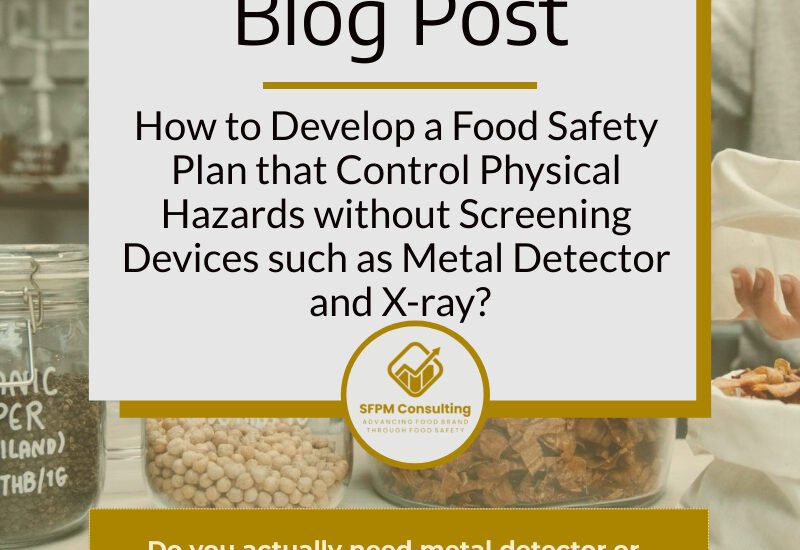- July 31, 2020
- Posted by: Felicia L
- Categories: Food Safety, Start-Up


This processing step works for larger manufacturers who have the space for the machine and the ability to monitor, verify and validate the processing step. With smaller food manufacturers or start-ups, it is challenging from operating, spacing and costing to run and operate automated screening devices such as metal detectors, X-rays etc.
We will be sharing how you can develop your food safety plan metal detector or x-ray device. Here are the steps that you can take to build your programs without relying on the use of a screening device such as a metal detector or X-ray machine.
Step 1: Identify possible physical hazards at the manufacturing plant.
Physical hazards can come from the raw materials (ingredients, packaging materials), building, equipment and tools, processes and from the employee. Identify all the natural (such as rocks, twigs, branches, sands, etc.) and introduced physical hazards such as plastic fragments, metal fragments, glass pieces, wood fragments, gloves etc.
Step 2: Develop and implement effective procedures to control these physical hazards.
Develop policies to control identified physical hazards. Utilize a combination of Pre-requisite programs such as the Foreign Material Control Program and other programs such as Premises, Equipment Maintenance and Personnel Training program to develop effective control measures.
Common Foreign Material Control Program include:
- Wood Policy
- Glass and Brittle Policy
- Gloves Policy
- Knives and Blade Control Policy
- Tools Count Log
- Inspection of tools and equipment parts -Equipment Maintenance Program
Step 3: Use HACCP form 8 to document the point of hazard introduction.
Using form 8, identify all hazards introduced through materials, processes and process flow. Evaluate if policies developed in Step 2 effectively control the risk of the physical hazards and evaluate if additional processes needed to control the hazards.
Step 4: Employee training and monitoring
A common pitfall for foreign material contamination is the foreign material control program exists but it is not being followed due to lack of training. Employee training and program monitoring is the key to ensure that foreign materials are appropriately controlled in the absence of screening devices.
Remember, if the pre-requisite programs can fully control these physical hazards, then a screening device became an unnecessary step.
Step 5: Prove that your programs are sufficient to control foreign materials at your facility.
Records! Records! Records! Records are essential to prove the effectiveness of foreign material control programs. These may include Tools Count Log, Glass and Brittle Plastic Check, Knives and Blade Control, Customer Complaint, Foreign Material Trends etc.
Question on the effectiveness of your foreign material control? SFPM Consulting is ready to help. We help our clients to develop an effective foreign material control program, so they don’t need a screening device.
Book a free consultation or call us at 604-256-9380 to see how you can control foreign materials at your facility without depending on a metal detector or X-ray.
